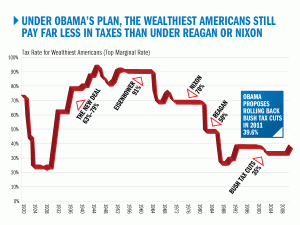I’m just not sure what:
The Obama administration is engineering its new bailout initiatives in a way that it believes will allow firms benefiting from the programs to avoid restrictions imposed by Congress, including limits on lavish executive pay, according to government officials.
Administration officials have concluded that this approach is vital for persuading firms to participate in programs funded by the $700 billion financial rescue package.
The administration believes it can sidestep the rules because, in many cases, it has decided not to provide federal aid directly to financial companies, the sources said. Instead, the government has set up special entities that act as middlemen, channeling the bailout funds to the firms and, via this two-step process, stripping away the requirement that the restrictions be imposed, according to officials.
At this point in time, there seems to be no significant functional difference between Paulson/Bush and Geithner/Obama. Both intended to give a ton of money to financial firms, either directly or by buying up crap at prices higher than justified. Both opposed any meaningful restrictions on how they spent the money or who they gave it to.
Actually, I take it back, one difference is that when Paulson wanted 700 billion, he went to Congress. When Geithner made up his plan he just had the FDIC and the FED pony up most of the money, because he knew Congress wouldn’t give him the money.
Some wonder if this is legal:
Although some experts are questioning the legality of this strategy, the officials said it gives them latitude to determine whether firms should be subject to the congressional restrictions, which would require recipients to turn over ownership stakes to the government, as well as curb executive pay.
Me, I don’t know if it’s legal. What I do know is that they plan on giving money away in a manner which clearly intends to end-run Congress’s clearly legislated mandate for how it be given away. What I know is that they are bypassing Congress when they can, because they know that the elected body which is the only one supposed to be able to pass spending bills wouldn’t give them all the money they want to spend and won’t let them spend what money it does give as freely as they want to.
Of course, that money will still have to be paid back by taxpayers, even if Congress never approved the spending.
But back to the TARP restrictions:
Congress drafted the restrictions amid its highly contentious consideration of the $700 billion rescue legislation last fall. At the time, lawmakers were aiming to reform the lavish pay practices on Wall Street. Congress also wanted the government to gain the right to buy stock in companies so that taxpayers would benefit if the firms recovered.
The requirements were honored in an initial program injecting public money directly into banks. That effort was developed by the Bush administration and continued by Obama’s team. The initiative is on track to account for the bulk of the money spent from the rescue package. All the major banks already submit to executive-compensation provisions and have surrendered ownership stakes as part of this program.
Yet as the Treasury has readied other programs, it has increasingly turned to creating the special entities. Legal experts said the Treasury’s plan to bypass the restrictions may be unlawful.
The problem is that while Geithner’s plan takes money from the FDIC and the Fed, it still uses some TARP money as seed money, and that money carries the restrictions.
I thought it wasn’t the executive’s job to decide that Congress is wrong and then deliberately end-run it. I thought we had an election to stop this sort of thing.
This is one of the things we spent the last 8 years blasting Bush for doing. But in this particular case, the new administration is being less compliant with Congress’s will than the Bush administration was!
Less!
I don’t know whether to spit or cry. I’ve always had my doubts about Obama, but in my worst dreams I didn’t think he’d try and end run Congress even more blatantly than Bush, in order to give even more money away to the richest Americans with even fewer restrictions and less protection from the taxpayer in terms of ownership stakes.
It’s going to be a long 4 years.



